Plant-Based
Animal-Based
Mineral-Based
Beverages
Food Products
Cosmetics
Pharmaceuticals
Carotenoids
Anthocyanins
Beetroot Red
Chlorophyll
Turmeric
Liquid
Powder
Granular
North America
Europe
South America
Asia Pacific
Middle East and Africa
North America Outlook (USD Billion, 2019-2035)
North America Natural Food Color Ingredients Market by Source Type
Plant-Based
Animal-Based
Mineral-Based
North America Natural Food Color Ingredients Market by Application Type
Beverages
Food Products
Cosmetics
Pharmaceuticals
North America Natural Food Color Ingredients Market by Type
Carotenoids
Anthocyanins
Beetroot Red
Chlorophyll
Turmeric
North America Natural Food Color Ingredients Market by Form Type
Liquid
Powder
Granular
North America Natural Food Color Ingredients Market by Regional Type
US
Canada
US Outlook (USD Billion, 2019-2035)
US Natural Food Color Ingredients Market by Source Type
Plant-Based
Animal-Based
Mineral-Based
US Natural Food Color Ingredients Market by Application Type
Beverages
Food Products
Cosmetics
Pharmaceuticals
US Natural Food Color Ingredients Market by Type
Carotenoids
Anthocyanins
Beetroot Red
Chlorophyll
Turmeric
US Natural Food Color Ingredients Market by Form Type
Liquid
Powder
Granular
CANADA Outlook (USD Billion, 2019-2035)
CANADA Natural Food Color Ingredients Market by Source Type
Plant-Based
Animal-Based
Mineral-Based
CANADA Natural Food Color Ingredients Market by Application Type
Beverages
Food Products
Cosmetics
Pharmaceuticals
CANADA Natural Food Color Ingredients Market by Type
Carotenoids
Anthocyanins
Beetroot Red
Chlorophyll
Turmeric
CANADA Natural Food Color Ingredients Market by Form Type
Liquid
Powder
Granular
Europe Outlook (USD Billion, 2019-2035)
Europe Natural Food Color Ingredients Market by Source Type
Plant-Based
Animal-Based
Mineral-Based
Europe Natural Food Color Ingredients Market by Application Type
Beverages
Food Products
Cosmetics
Pharmaceuticals
Europe Natural Food Color Ingredients Market by Type
Carotenoids
Anthocyanins
Beetroot Red
Chlorophyll
Turmeric
Europe Natural Food Color Ingredients Market by Form Type
Liquid
Powder
Granular
Europe Natural Food Color Ingredients Market by Regional Type
Germany
UK
France
Russia
Italy
Spain
Rest of Europe
GERMANY Outlook (USD Billion, 2019-2035)
GERMANY Natural Food Color Ingredients Market by Source Type
Plant-Based
Animal-Based
Mineral-Based
GERMANY Natural Food Color Ingredients Market by Application Type
Beverages
Food Products
Cosmetics
Pharmaceuticals
GERMANY Natural Food Color Ingredients Market by Type
Carotenoids
Anthocyanins
Beetroot Red
Chlorophyll
Turmeric
GERMANY Natural Food Color Ingredients Market by Form Type
Liquid
Powder
Granular
UK Outlook (USD Billion, 2019-2035)
UK Natural Food Color Ingredients Market by Source Type
Plant-Based
Animal-Based
Mineral-Based
UK Natural Food Color Ingredients Market by Application Type
Beverages
Food Products
Cosmetics
Pharmaceuticals
UK Natural Food Color Ingredients Market by Type
Carotenoids
Anthocyanins
Beetroot Red
Chlorophyll
Turmeric
UK Natural Food Color Ingredients Market by Form Type
Liquid
Powder
Granular
FRANCE Outlook (USD Billion, 2019-2035)
FRANCE Natural Food Color Ingredients Market by Source Type
Plant-Based
Animal-Based
Mineral-Based
FRANCE Natural Food Color Ingredients Market by Application Type
Beverages
Food Products
Cosmetics
Pharmaceuticals
FRANCE Natural Food Color Ingredients Market by Type
Carotenoids
Anthocyanins
Beetroot Red
Chlorophyll
Turmeric
FRANCE Natural Food Color Ingredients Market by Form Type
Liquid
Powder
Granular
RUSSIA Outlook (USD Billion, 2019-2035)
RUSSIA Natural Food Color Ingredients Market by Source Type
Plant-Based
Animal-Based
Mineral-Based
RUSSIA Natural Food Color Ingredients Market by Application Type
Beverages
Food Products
Cosmetics
Pharmaceuticals
RUSSIA Natural Food Color Ingredients Market by Type
Carotenoids
Anthocyanins
Beetroot Red
Chlorophyll
Turmeric
RUSSIA Natural Food Color Ingredients Market by Form Type
Liquid
Powder
Granular
ITALY Outlook (USD Billion, 2019-2035)
ITALY Natural Food Color Ingredients Market by Source Type
Plant-Based
Animal-Based
Mineral-Based
ITALY Natural Food Color Ingredients Market by Application Type
Beverages
Food Products
Cosmetics
Pharmaceuticals
ITALY Natural Food Color Ingredients Market by Type
Carotenoids
Anthocyanins
Beetroot Red
Chlorophyll
Turmeric
ITALY Natural Food Color Ingredients Market by Form Type
Liquid
Powder
Granular
SPAIN Outlook (USD Billion, 2019-2035)
SPAIN Natural Food Color Ingredients Market by Source Type
Plant-Based
Animal-Based
Mineral-Based
SPAIN Natural Food Color Ingredients Market by Application Type
Beverages
Food Products
Cosmetics
Pharmaceuticals
SPAIN Natural Food Color Ingredients Market by Type
Carotenoids
Anthocyanins
Beetroot Red
Chlorophyll
Turmeric
SPAIN Natural Food Color Ingredients Market by Form Type
Liquid
Powder
Granular
REST OF EUROPE Outlook (USD Billion, 2019-2035)
REST OF EUROPE Natural Food Color Ingredients Market by Source Type
Plant-Based
Animal-Based
Mineral-Based
REST OF EUROPE Natural Food Color Ingredients Market by Application Type
Beverages
Food Products
Cosmetics
Pharmaceuticals
REST OF EUROPE Natural Food Color Ingredients Market by Type
Carotenoids
Anthocyanins
Beetroot Red
Chlorophyll
Turmeric
REST OF EUROPE Natural Food Color Ingredients Market by Form Type
Liquid
Powder
Granular
APAC Outlook (USD Billion, 2019-2035)
APAC Natural Food Color Ingredients Market by Source Type
Plant-Based
Animal-Based
Mineral-Based
APAC Natural Food Color Ingredients Market by Application Type
Beverages
Food Products
Cosmetics
Pharmaceuticals
APAC Natural Food Color Ingredients Market by Type
Carotenoids
Anthocyanins
Beetroot Red
Chlorophyll
Turmeric
APAC Natural Food Color Ingredients Market by Form Type
Liquid
Powder
Granular
APAC Natural Food Color Ingredients Market by Regional Type
China
India
Japan
South Korea
Malaysia
Thailand
Indonesia
Rest of APAC
CHINA Outlook (USD Billion, 2019-2035)
CHINA Natural Food Color Ingredients Market by Source Type
Plant-Based
Animal-Based
Mineral-Based
CHINA Natural Food Color Ingredients Market by Application Type
Beverages
Food Products
Cosmetics
Pharmaceuticals
CHINA Natural Food Color Ingredients Market by Type
Carotenoids
Anthocyanins
Beetroot Red
Chlorophyll
Turmeric
CHINA Natural Food Color Ingredients Market by Form Type
Liquid
Powder
Granular
INDIA Outlook (USD Billion, 2019-2035)
INDIA Natural Food Color Ingredients Market by Source Type
Plant-Based
Animal-Based
Mineral-Based
INDIA Natural Food Color Ingredients Market by Application Type
Beverages
Food Products
Cosmetics
Pharmaceuticals
INDIA Natural Food Color Ingredients Market by Type
Carotenoids
Anthocyanins
Beetroot Red
Chlorophyll
Turmeric
INDIA Natural Food Color Ingredients Market by Form Type
Liquid
Powder
Granular
JAPAN Outlook (USD Billion, 2019-2035)
JAPAN Natural Food Color Ingredients Market by Source Type
Plant-Based
Animal-Based
Mineral-Based
JAPAN Natural Food Color Ingredients Market by Application Type
Beverages
Food Products
Cosmetics
Pharmaceuticals
JAPAN Natural Food Color Ingredients Market by Type
Carotenoids
Anthocyanins
Beetroot Red
Chlorophyll
Turmeric
JAPAN Natural Food Color Ingredients Market by Form Type
Liquid
Powder
Granular
SOUTH KOREA Outlook (USD Billion, 2019-2035)
SOUTH KOREA Natural Food Color Ingredients Market by Source Type
Plant-Based
Animal-Based
Mineral-Based
SOUTH KOREA Natural Food Color Ingredients Market by Application Type
Beverages
Food Products
Cosmetics
Pharmaceuticals
SOUTH KOREA Natural Food Color Ingredients Market by Type
Carotenoids
Anthocyanins
Beetroot Red
Chlorophyll
Turmeric
SOUTH KOREA Natural Food Color Ingredients Market by Form Type
Liquid
Powder
Granular
MALAYSIA Outlook (USD Billion, 2019-2035)
MALAYSIA Natural Food Color Ingredients Market by Source Type
Plant-Based
Animal-Based
Mineral-Based
MALAYSIA Natural Food Color Ingredients Market by Application Type
Beverages
Food Products
Cosmetics
Pharmaceuticals
MALAYSIA Natural Food Color Ingredients Market by Type
Carotenoids
Anthocyanins
Beetroot Red
Chlorophyll
Turmeric
MALAYSIA Natural Food Color Ingredients Market by Form Type
Liquid
Powder
Granular
THAILAND Outlook (USD Billion, 2019-2035)
THAILAND Natural Food Color Ingredients Market by Source Type
Plant-Based
Animal-Based
Mineral-Based
THAILAND Natural Food Color Ingredients Market by Application Type
Beverages
Food Products
Cosmetics
Pharmaceuticals
THAILAND Natural Food Color Ingredients Market by Type
Carotenoids
Anthocyanins
Beetroot Red
Chlorophyll
Turmeric
THAILAND Natural Food Color Ingredients Market by Form Type
Liquid
Powder
Granular
INDONESIA Outlook (USD Billion, 2019-2035)
INDONESIA Natural Food Color Ingredients Market by Source Type
Plant-Based
Animal-Based
Mineral-Based
INDONESIA Natural Food Color Ingredients Market by Application Type
Beverages
Food Products
Cosmetics
Pharmaceuticals
INDONESIA Natural Food Color Ingredients Market by Type
Carotenoids
Anthocyanins
Beetroot Red
Chlorophyll
Turmeric
INDONESIA Natural Food Color Ingredients Market by Form Type
Liquid
Powder
Granular
REST OF APAC Outlook (USD Billion, 2019-2035)
REST OF APAC Natural Food Color Ingredients Market by Source Type
Plant-Based
Animal-Based
Mineral-Based
REST OF APAC Natural Food Color Ingredients Market by Application Type
Beverages
Food Products
Cosmetics
Pharmaceuticals
REST OF APAC Natural Food Color Ingredients Market by Type
Carotenoids
Anthocyanins
Beetroot Red
Chlorophyll
Turmeric
REST OF APAC Natural Food Color Ingredients Market by Form Type
Liquid
Powder
Granular
South America Outlook (USD Billion, 2019-2035)
South America Natural Food Color Ingredients Market by Source Type
Plant-Based
Animal-Based
Mineral-Based
South America Natural Food Color Ingredients Market by Application Type
Beverages
Food Products
Cosmetics
Pharmaceuticals
South America Natural Food Color Ingredients Market by Type
Carotenoids
Anthocyanins
Beetroot Red
Chlorophyll
Turmeric
South America Natural Food Color Ingredients Market by Form Type
Liquid
Powder
Granular
South America Natural Food Color Ingredients Market by Regional Type
Brazil
Mexico
Argentina
Rest of South America
BRAZIL Outlook (USD Billion, 2019-2035)
BRAZIL Natural Food Color Ingredients Market by Source Type
Plant-Based
Animal-Based
Mineral-Based
BRAZIL Natural Food Color Ingredients Market by Application Type
Beverages
Food Products
Cosmetics
Pharmaceuticals
BRAZIL Natural Food Color Ingredients Market by Type
Carotenoids
Anthocyanins
Beetroot Red
Chlorophyll
Turmeric
BRAZIL Natural Food Color Ingredients Market by Form Type
Liquid
Powder
Granular
MEXICO Outlook (USD Billion, 2019-2035)
MEXICO Natural Food Color Ingredients Market by Source Type
Plant-Based
Animal-Based
Mineral-Based
MEXICO Natural Food Color Ingredients Market by Application Type
Beverages
Food Products
Cosmetics
Pharmaceuticals
MEXICO Natural Food Color Ingredients Market by Type
Carotenoids
Anthocyanins
Beetroot Red
Chlorophyll
Turmeric
MEXICO Natural Food Color Ingredients Market by Form Type
Liquid
Powder
Granular
ARGENTINA Outlook (USD Billion, 2019-2035)
ARGENTINA Natural Food Color Ingredients Market by Source Type
Plant-Based
Animal-Based
Mineral-Based
ARGENTINA Natural Food Color Ingredients Market by Application Type
Beverages
Food Products
Cosmetics
Pharmaceuticals
ARGENTINA Natural Food Color Ingredients Market by Type
Carotenoids
Anthocyanins
Beetroot Red
Chlorophyll
Turmeric
ARGENTINA Natural Food Color Ingredients Market by Form Type
Liquid
Powder
Granular
REST OF SOUTH AMERICA Outlook (USD Billion, 2019-2035)
REST OF SOUTH AMERICA Natural Food Color Ingredients Market by Source Type
Plant-Based
Animal-Based
Mineral-Based
REST OF SOUTH AMERICA Natural Food Color Ingredients Market by Application Type
Beverages
Food Products
Cosmetics
Pharmaceuticals
REST OF SOUTH AMERICA Natural Food Color Ingredients Market by Type
Carotenoids
Anthocyanins
Beetroot Red
Chlorophyll
Turmeric
REST OF SOUTH AMERICA Natural Food Color Ingredients Market by Form Type
Liquid
Powder
Granular
MEA Outlook (USD Billion, 2019-2035)
MEA Natural Food Color Ingredients Market by Source Type
Plant-Based
Animal-Based
Mineral-Based
MEA Natural Food Color Ingredients Market by Application Type
Beverages
Food Products
Cosmetics
Pharmaceuticals
MEA Natural Food Color Ingredients Market by Type
Carotenoids
Anthocyanins
Beetroot Red
Chlorophyll
Turmeric
MEA Natural Food Color Ingredients Market by Form Type
Liquid
Powder
Granular
MEA Natural Food Color Ingredients Market by Regional Type
GCC Countries
South Africa
Rest of MEA
GCC COUNTRIES Outlook (USD Billion, 2019-2035)
GCC COUNTRIES Natural Food Color Ingredients Market by Source Type
Plant-Based
Animal-Based
Mineral-Based
GCC COUNTRIES Natural Food Color Ingredients Market by Application Type
Beverages
Food Products
Cosmetics
Pharmaceuticals
GCC COUNTRIES Natural Food Color Ingredients Market by Type
Carotenoids
Anthocyanins
Beetroot Red
Chlorophyll
Turmeric
GCC COUNTRIES Natural Food Color Ingredients Market by Form Type
Liquid
Powder
Granular
SOUTH AFRICA Outlook (USD Billion, 2019-2035)
SOUTH AFRICA Natural Food Color Ingredients Market by Source Type
Plant-Based
Animal-Based
Mineral-Based
SOUTH AFRICA Natural Food Color Ingredients Market by Application Type
Beverages
Food Products
Cosmetics
Pharmaceuticals
SOUTH AFRICA Natural Food Color Ingredients Market by Type
Carotenoids
Anthocyanins
Beetroot Red
Chlorophyll
Turmeric
SOUTH AFRICA Natural Food Color Ingredients Market by Form Type
Liquid
Powder
Granular
REST OF MEA Outlook (USD Billion, 2019-2035)
REST OF MEA Natural Food Color Ingredients Market by Source Type
Plant-Based
Animal-Based
Mineral-Based
REST OF MEA Natural Food Color Ingredients Market by Application Type
Beverages
Food Products
Cosmetics
Pharmaceuticals
REST OF MEA Natural Food Color Ingredients Market by Type
Carotenoids
Anthocyanins
Beetroot Red
Chlorophyll
Turmeric
REST OF MEA Natural Food Color Ingredients Market by Form Type
Liquid
Powder
Granular
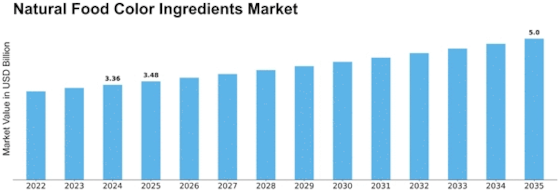

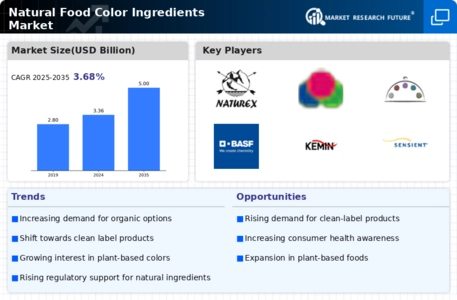


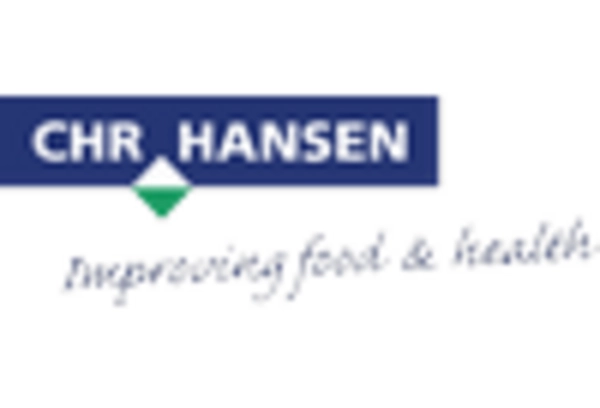
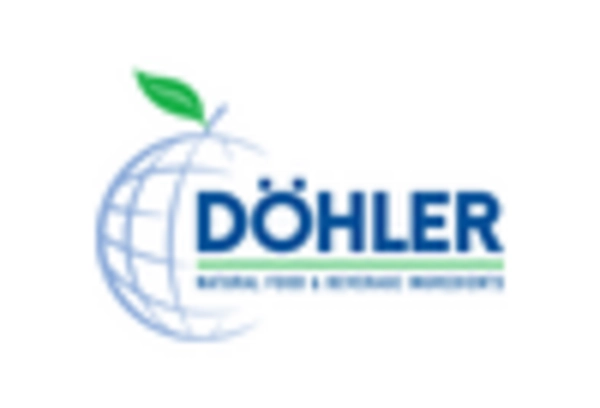
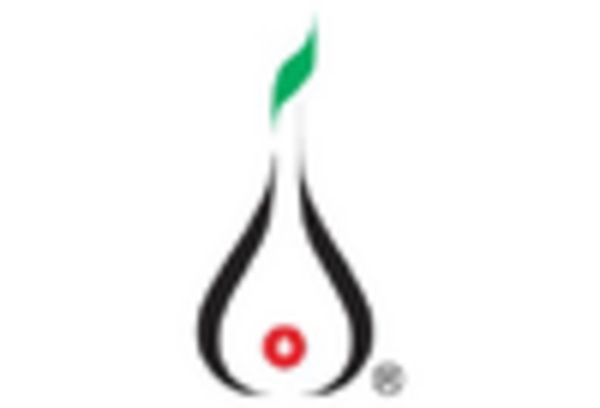
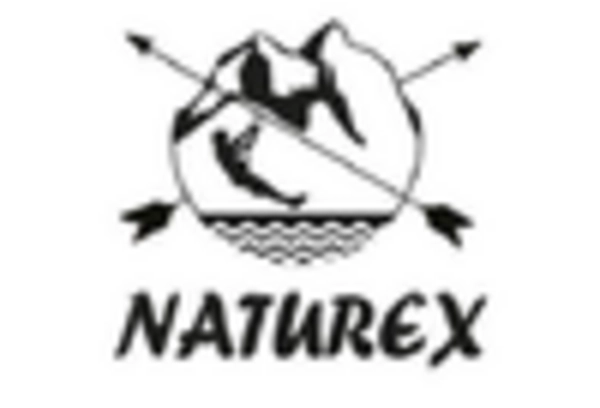
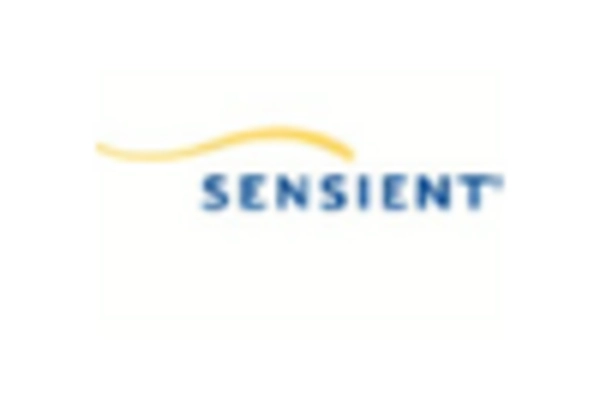

Leave a Comment